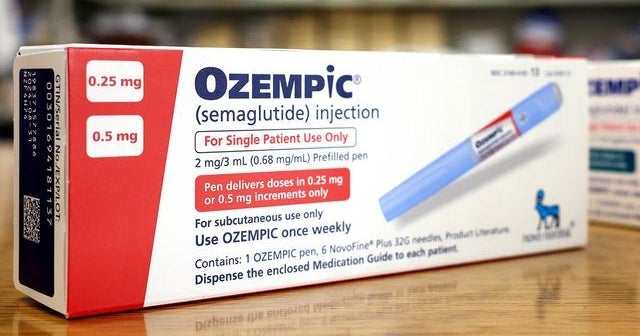 Mortgage rates are finally easing after the Fed's recent rate cut, and that translates to lower monthly payments for buyers.
Getty Images/iStockphoto
Mortgage rates are finally easing after the Fed's recent rate cut, and that translates to lower monthly payments for buyers.
Getty Images/iStockphoto
The Federal Reserve's decision to slash its benchmark rate by 25 basis points last week sent ripples through the mortgage market, delivering the kind of relief homebuyers and homeowners have been waiting for. As borrowers waited for official confirmation of the rate cut, the average 30-year fixed mortgage loan rate fell to 6.13%, bringing mortgage costs down to their most affordable level in the last three years. This shift represents a significant departure from the rate environment earlier this year, when borrowers were grappling with mortgage rates that averaged above 7%.
As rates dropped, both new mortgage loans and mortgage refinancing applications surged, signaling just how eager borrowers are to capitalize on this newfound opportunity to take out a mortgage at an affordable rate. And, that uptick in borrower interest makes a lot of sense. After all, it only takes a small drop in mortgage rates to make a noticeable difference in the monthly costs of a mortgage loan. But what does this new rate environment actually mean in terms of the payments for borrowers who plan to take out a $350,000 mortgage loan right now? Below, we'll calculate the costs associated with a mortgage loan of this size.
Find out more about the low mortgage loan rates you could qualify for today.
What are the monthly payments on a $350,000 mortgage now that the Fed has cut rates?
At today's average rate of 6.13% for a 30-year fixed loan, the principal and interest payment on a $350,000 mortgage comes to $2,127.77 per month. While this baseline figure doesn't include the other common costs that are rolled into your monthly mortgage loan payment, like property taxes, homeowners insurance or private mortgage insurance (PMI), it still offers a clear picture of the core borrowing costs.
To put this in perspective, let's consider where rates stood at the start of 2025. When mortgage rates were sitting at an average of 7.04% in early January, that same $350,000 loan would have carried a monthly payment of around $2,337.97 for principal and interest. The difference between then and now? You're looking at a payment that's roughly $210 less per month, or more than $2,500 in annual savings, simply because of the rate decline.
This extra breathing room in the monthly budget could be the deciding factor between stretching financially and finding a comfortable payment structure for many types of homebuyers. For example, first-time homebuyers might find that this rate environment opens doors to homes that seemed out of reach for their budgets just a few months ago. Move-up buyers could discover they have more purchasing power than they realized, while existing homeowners might finally see refinancing as a viable option after years of waiting for a market shift.
The long-term implications of the mortgage rate shift are equally striking. Over the full 30-year term of the loan, choosing today's 6.13% rate over January's 7%-plus rates saves more than $75,000 in total interest payments. That's a substantial sum that could be redirected toward home improvements, retirement savings or any other number of financial goals.
Compare your top mortgage loan options online now.
How much would it cost to refinance a $350,000 mortgage at today's rates?
Current homeowners aren't left out of this rate-cutting equation, either. The decline in mortgage rates has also created attractive refinancing opportunities, with the specific savings depending on your chosen loan term and current rate situation. If you're considering refinancing a $350,000 mortgage balance at today's rates, here's what your monthly payments would look like:
A 15-year refinance at 5.98%: For homeowners who want to pay off their mortgage faster while taking advantage of lower rates, a 15-year refinance would result in monthly principal and interest payments of $2,949.72. While this monthly payment is higher than a 30-year option, it allows you to eliminate your mortgage debt in half the time while saving tens of thousands in total interest costs over the loan's lifetime.
A 30-year refinance at 6.67%: Those who prefer to keep monthly payments manageable while still benefiting from today's lower rates would see principal and interest payments of $2,251.51 monthly. This option works particularly well for homeowners whose current rates are significantly higher than today's market rates, especially if they originally financed when rates were above 7%.
That said, the decision between refinancing your home loan and waiting ultimately comes down to your current rate and financial goals. Many experts suggest that you should consider refinancing when you can reduce your rate by at least half a percentage point. However, this rule of thumb varies based on your circumstances and closing costs.
The bottom line
The Fed's first rate cut of 2025 has delivered tangible benefits to the mortgage market, with 30-year rates dropping to their lowest point in nearly a year. For a $350,000 mortgage, this translates to monthly savings of roughly $210 compared to rates earlier this year, plus significant long-term interest savings.
Before you make any moves, though, be sure to compare offers from multiple lenders, get preapproved if you're buying and don't assume rates will continue falling. For now, the cost of financing $350,000 has dropped substantially, and both new buyers and existing homeowners stand to benefit.
Angelica Leicht is the senior editor for the Managing Your Money section for CBSNews.com, where she writes and edits articles on a range of personal finance topics. Angelica previously held editing roles at The Simple Dollar, Interest, HousingWire and other financial publications.


















































